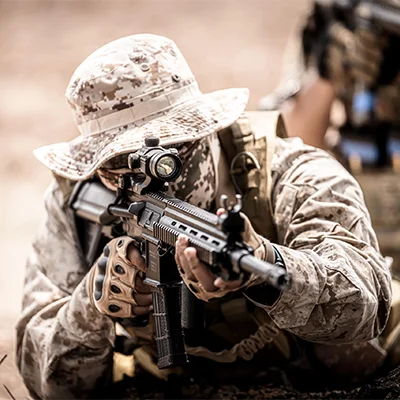Mustard Gas and Lewisite Exposure
A veteran qualifies under the VA Presumptive List for Mustard Gas and Lewisite Exposure if they can prove full-body exposure to mustard gas (sulphur or nitrogen) or Lewisite while on active duty in one or more of the following ways:
- during field or chamber testing
- during battlefield conditions in WWI
- during the German air raid on Bari, Italy in WWII
- during the manufacturing or handling of these compounds
If the veteran qualifies, then the following conditions are considered service-connected.

If the veteran qualifies, then the following conditions are considered service-connected.
Mustard gas:
- chronic conjunctivitis, code 6018
- keratitis, rated analogously under code 6001
- corneal opacities, rated analogously under code 6001, 6009, or 6027
- scars (must clearly be from exposure)
- nasopharyngeal cancer, code 6819
- laryngeal cancer, code 6819
- lung cancer (except mesothelioma), code 6819
- squamous cell carcinoma, code 7818
- chronic laryngitis, code 6516
- chronic bronchitis, code 6600
- chronic emphysema, code 6603
- asthma, code 6602
- chronic obstructive pulmonary disease, code 6604
- acute non-lymphocytic leukemia, code 7703 (nitrogen mustard only)
3. The Rating Decision
-
What Happens:
- A VA adjudicator determines whether your conditions are service-connected.
- The adjudicator assigns a disability rating to each condition based on the VASRD (VA Schedule for Rating Disabilities).
- If applicable, they assess your eligibility for Special Monthly Compensation (SMC).
-
Outcome:
- Your individual ratings are combined using VA Math to calculate your Total Combined Rating.
- This combined rating determines your monthly compensation amount.
- If approved, you will begin receiving monthly VA disability payments.
- If denied or you disagree with the decision, you can appeal.
The key to this VA Presumptive List is the ability to prove exposure. Unfortunately, proper record keeping regarding mustard gas exposure, especially for service members used for testing, was incredibly bad, so the majority of exposure cases were not sufficiently recorded.
Because of this, the VA has a few things in place to help veterans prove exposure. The first is a database of all the names they could compile of service members involved in testing. Again, because of the bad record keeping, this list is far from complete. After receiving a claim, they will check to see if the veteran is on this list. If they are, then that is sufficient to prove exposure. If, however, they are not, then details of the veteran’s case are forwarded to the Deployment Health Directorate for review and determination of exposure. The Directorate has the final say on whether or not the evidence is sufficient to prove exposure.
To make sure that the Directorate has all the information needed to make a proper determination, include the following in your VA Disability Claim:
- detailed cause of exposure (deployed warfare exposure, test involvement, etc.)
- procedures followed before, during, and after exposure (including any medical treatment received after exposure)
- immediate effects (blistering, difficulty breathing, etc.) and residual effects (development of one of the above conditions, etc.) of exposure.
Be One of the First to Subscribe!
Don’t miss your chance to be part of the SentinelSyx community. Join the first 10,000 veterans and gain exclusive access to AI-powered support designed to simplify your VA benefits.


